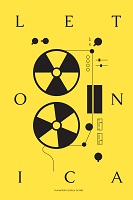The Role of Non-governmental Organizations in Ensuring the Sustainability of Cultural Heritage: A Case Study of the SERDE Art Residency Centre
The Role of Non-governmental Organizations in Ensuring the Sustainability of Cultural Heritage: A Case Study of the SERDE Art Residency Centre
Author(s): Rūta Muktupāvela, Ieva VītolaSubject(s): Politics and society, Cultural Anthropology / Ethnology, Culture and social structure , Sociology of Culture
Published by: Latvijas Universitātes Literatūras, folkloras un mākslas institūts
Keywords: Cultural ecosystem; intangible cultural heritage; culture policy;
Summary/Abstract: Without cultural heritage in all its diversity — natural, tangible, intangible, and digital — it is hard to imagine the existence of any full and viable cultural ecosystem. The cultural ecosystem can be conceptualized as a set of interdependent elements: organizations, groups, and individuals, whose activities are aimed at the balanced and productive existence of the whole society. Awareness and understanding of the role and the importance of each of its actors is essential for the successful functioning of an ecosystem and for any meaningful, innovative, and development-oriented initiative to be valued and, where appropriate, supported. All players — the government, non-governmental organizations (NGOs), communities, and individuals — are equally important in the management of cultural heritage. There are three levels of policymaking and implementation — the national, regional, and local (European Commission 2021). The aim of this article is to analyze the experience of cultural NGOs focusing on intangible cultural heritage to reveal their potential and role in cultural heritage management processes by applying a case study approach, thus identifying factors that promote sustainability and factors which contain risks. The research was carried out using the ethnographic approach, conducting participant observation and in-depth interviews and identifying documentary evidence and the norms regulating the activities of the non-governmental sector relevant to the research. The theoretical framework is based on the four-role model developed by John Holden, a cultural policy researcher. These roles are normally performed by members of the cultural ecosystem, which has a certain significance for guardians, caring for the culture of the past, for platforms that provide the cultural expressions of places and spaces today, and for connectors that connect parts of an ecosystem. In this way cultural processes are promoted, so that the nomads, the cultural citizens — as artists and as the audience — can act in all the above three roles (Holden 2015a: 29). J. Holden emphasizes that usually each participant plays one role; however, the examples of Latvia reveal that NGOs, working in the cultural heritage sector, at the same time provide several roles — those of the guardian, platform, and connector or process facilitator — thus serving as an essential resource for supporting and enhancing cultural heritage (Eiropas Reģionu komiteja 2015), and in this way ensuring the creative circulation of cultural heritage, becoming a source and breeding ground for innovation and new forms of culture (Holden 2015b). The Sustainable Development Strategy of Latvia until 2030 emphasizes: “The people of Latvia have a common tangible and intangible cultural heritage accumulated through centuries of creative work. Culture lays the foundation for what we are and what we want to be. Common cultural heritage, language, traditions, and an understanding of values are key components which provide a sense of belonging to a particular community and promotes social cohesion.” In turn, a cohesive society is characterized by its involvement in cultural processes, and NGOs will continue to play a significant, active role in the future (Saeima 2010: 16).
Journal: Letonica
- Issue Year: 2022
- Issue No: 46
- Page Range: 54-77
- Page Count: 54
- Language: English

